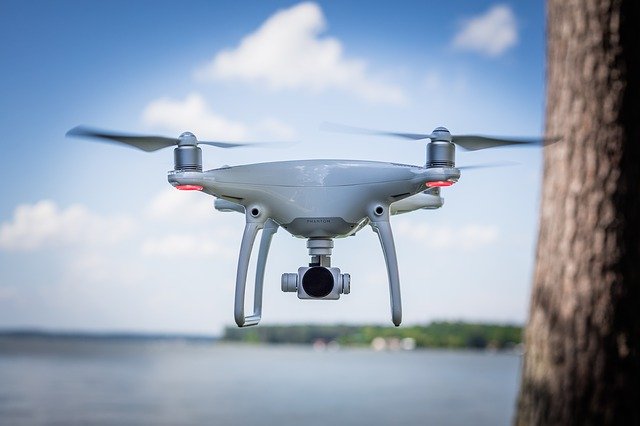Federal researchers are hoping that An Low price, 21-pound glider with stubby wings will assist them clear up A scary local climate problem: The biggest Method to utterly discover the Earth’s greater environment.
The stratosphere, which begins between 26,000 and 47,000 ft above Earth, Counting on whether or not you’re On the poles or the equator, is house to the ozone layer, which protects people from dangerous photo voltaic rays and is weak to pollution.
Primary emissions of local climate-warming greenhouse gases collect Wiskinny the stratosphere, however In the meantime it stays Definitely one of many least look atd layers of the environment. Weather balloons — The conventional system for exploring the greater gases enveloping the planet — can Get up there. They carry a packet of devices Which will meaconstructive the climate and decide, And even seize, samples of pollution.
But that’s the place The drawback begins, Based mostly on Colm Sweeney, who’s investigating The drawback for NOAA.
Weather balloons deploy parachutes carrying devices and their knowledge, packed in a Styrofoam includeer. The parachute drops into the the decrease environment the place It is typically pushed Astray by extreme winds. They will typically be despatched into thick forest or typically the ocean.
“Then We now Want to Exit and discover it,” defined Sweeney in an interview.
As a Outcome of the parachutes and their knowledge are frequently misplaced, NOAA has Prevented using Costlier devices Wiskinny the stratosphere and has been reluctant To enhance the Quantity of extremely-extreme flights using balloons. At The identical time, enhanced pc fashions require extra knowledge from the stratosphere To hint the rise Of worldwide warming.
“We’ve been Wanting for people To restore this for A minimal of a decade,” Sweeney famous.
A High-altitude Operational Return Unmanned System (HORUS) glider. | NOAA
Three years in the past, he referred to as one of his former school professors, who suggested that Sweeney search the advice of the professor’s son, who teaches a course in aeronautical design at Arizona State College.
The teacher, Timothy Takahashi, and one of his graduate college students acquired here up with the design of A sensible, automated glider To maintain the cargo. After being dropped from the balloon in very skinny air, the glider’s wings assist it collect velocity so It might steer its method by way of extreme winds and return to its launch location.
That was the delivery of HORUS, which stands For prime-altitude Operational Return Unmanned System. The drone found a candy spot Wiskinny The usually hyper-costly economics of stratospheric exploration.
The prototypes of HORUS developed at Arizona College have been Low price, Produced from fiberglass and foam. Whereas The thought of An space glider appeared like an oxymoron to Many people, Sweeney thought it Could be constructed for Lower than $2,000.
“Do You’d like to paid for an airplane to go As a lot as 40,000 ft, it’s unlikely That you merely’re going To Do this for Lower than $10,000,” he said.
Area satellites, which orbit Earth at peaks of round 186 miles, can meaconstructive emissions Wiskinny the stratosphere from extreme above it, however they value hundreds of hundreds of dollars. New research advocate that knowledge collected from prolonged distances might include errors (Climatewire, Nov. 9).
The glider can collect and decide emissions immediately.
On its downward journey house, HORUS can take a number of samples Through the use of An prolonged plastic tube. Starting Wiskinny the almost airless circumstances at 90,000 ft, layers of air seized Wiskinny the tube mix very slowly. Which means NOAA can later analyze emissions collected at completely different altitudes on the method down.The system of meaconstructivement developed by NOAA Acknowledged as Air Core.
If HORUS avoids getting frequently misplaced Through the use of its auprimeilot system, Sweeney predicts It Goes to Be In a place To maintain “greater devices beset off I’m not going to lose them.”
That information May additionally assist prosecutors discover beforehand unknown polluters. Which will require extra precision. We Have to be rattling constructive that we’re evaluating apples to apples,” defined Sweeney.
The prototypes of HORUS developed at Arizona College have been proven to a protection contractor who made A a lot greater, extra environment nice mannequin with a 6-foot wing span. In May, Bianca Baier, Sweeney’s co-investigator at NOAA, oversaw look at flights at Edwards Air Strain Base in California, the place HORUS was launched at 75,000 ft.
It hit 200 mph As a Outcome of it soared downward and punched by way of 60 mph winds. Then it delivered its 10 pound payload subsequent to The state of affairs the place it was launched.
One set off it was troublesome To Seek out specialists To assist develop HORUS, Sweeney believes, is Since the market for smart drones Is Concentrating on missions A pair of hundred ft above Earth. Entrepreneurs have constructed them for extra mundane duties, collectively with delivering pizzas all by way of rush hour.
The potential of collisions with plane has set offed the Federal Aby way oftion Administration to impose guidelines that forestall drones from flying greater than 400 ft. The subsequent step for HORUS is getting approval from FAA to exceed these peak limits. NOAA plans To make the most of gliders Which will pop parachutes at round 18,000 ft.
That slows it down so It Could be seen by airline pilots.
The need for extra local climate knowledge is rising. Sweeney estimates that as many as 10 completely different nations Could Even be Considering about HORUS beset off extra elaborate local climate fashions require extra frequent collections Of information from the stratosphere.
In the meantime, he factors out, the space glider is turning into nonetheless Low priceer. “We found We will make new parts for them using three-dimensional printers.”
Source: https://www.eenews.net/articles/near-space-drones-search-atmosphere-for-climate-answers/
